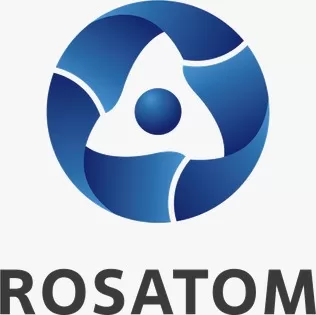The modern world is progressing swiftly, propelled by humanity’s ever-growing ambitions to satisfy fundamental needs such as food, clothing, and comfortable shelter.
The implementation of innovations and the achievements of scientific and technological progress underpin mankind’s quest to enhance living conditions, with nuclear technology playing a pivotal role.
ÎThe potential applications of nuclear technologies are extensive, spanning agriculture, medicine, desalination, and scientific research.
A notable instance of nuclear technology serving humanity is the Center for Nuclear Research and Technology, under construction by Rosatom State Atomiс Energy Corporation in Bolivia.
This project is being executed by GSPI JSC (a Rosatom subsidiary) at the behest of the Bolivian Nuclear Energy Agency (ABEN). As of March, this year, the Center commenced the production of medical radiopharmaceuticals.
The initiation of fluorodeoxyglucose supplies, a tool for early cancer diagnosis, was overseen by Bolivian President Luis Arce Catacora.
The cyclotron complex in Bolivia is a component of the Center for Nuclear Research and Technology (CNRT). This facility is poised to augment the healthcare system by manufacturing a range of radiopharmaceuticals; clinical trials conducted here have the capacity to encompass more than 5,000 patients annually.
“Our country has made significant progress,” asserted Bolivian President Luis Arce Catacora. “We now have the capability to independently produce radiopharmaceuticals for cancer diagnostics, which previously had to be imported.”
The subsequent phase involves broadening the range of radiopharmaceuticals and initiating export to neighboring nations.
“With assistance from Rosatom specialists, Bolivia is emerging as one of the forerunners in the regional application of nuclear technologies,” stated Kirill Komarov, First Deputy Director General of Rosatom and Director of the Development and International Business Unit.
In addition to the cyclotron complex, CNRT houses a multi-purpose Irradiation Center (IRC), which commenced trial operation in the preceding year.
The IRC, leveraging an industrial gamma installation, boasts a throughput capacity exceeding 70 tons of agricultural raw materials and food products daily.
This facilitates the processing of domestically produced agricultural and food items to ensure their safety and prolong their shelf life. In Bolivia, where agriculture serves as a predominant employment sector and agricultural goods are a principal export, the IRC is pivotal.
It empowers the nation to enhance its product exports while substantially mitigating food wastage—by up to 50%.
This is attributed to the ionizing irradiation method which curtails the proliferation of pathogenic microorganisms and viruses. Moreover, the IRC is focusing on developing sterilization technology for medical equipment.
In addition to the aforementioned facilities, CNIT is constructing laboratories focused on radiobiology and radioecology. These labs will explore the effects of ionizing radiation on pathogens and will develop and implement technologies for irradiating agricultural raw materials and food products.
Construction of a reactor complex, featuring a pool-type pressurized water research reactor with a thermal power of 200 kW, is also underway.
Unlike power reactors, which primarily generate electricity, research reactors are dedicated to advancing the understanding and development of nuclear technologies. They are essential for scientists, engineers, and educators to conduct experiments, collect scientific data, and cultivate the next generation of specialists in the field.
These facilities have diverse applications, including environmental protection, industry, mining, and forensics.
Erlan Vazquez, a nuclear engineering specialist at ABEN, noted, “Such facilities produce radioisotopes pivotal for optimizing our water resource management and allow the application of neutron activation analysis in mining to identify minerals of strategic importance, pinpointing promising areas for development.” The first concrete for the foundation was poured in July of the previous year.
Beyond its practical advantages, the Center is set to be a comprehensive nuclear educational hub, training specialists in nuclear physics and related fields from Bolivia and other nations. The Central Nuclear Research Center’s construction is slated for completion in 2025.
The Nuclear Research and Technology Center in El Alto stands as one of Bolivia’s paramount health projects, unparalleled globally, owing to its location approximately 4,000 m above sea level. This endeavor will significantly bolster developments in science, medicine, agriculture, and education in Bolivia, creating over 500 specialized jobs for its citizens.
The establishment of CNIT serves as a model for nations keen on actively embracing nuclear technologies. Evgeny Pakermanov, President of Rusatom Overseas JSC, highlighted, “Rosatom’s proposed model of nuclear science and technology centers is adaptable, providing various design solutions that accommodate the economic, industrial experience, and financial needs of the partner country.
The CNIT product line proffers specialized solutions for sectors like agriculture and healthcare and includes modernization solutions for existing research reactor projects, granting our clients more freedom of choice.”
This refined version maintains the details and nuances of the original text while enhancing its readability and coherence.






Discussion about this post